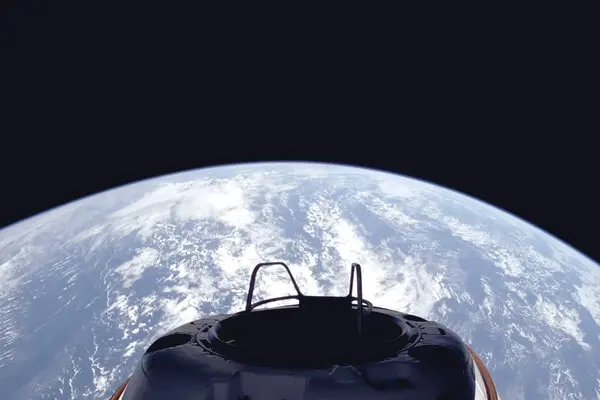Context:
Recently, SpaceX Falcon 9 rocket launched the world’s first private spacewalk,Polaris Dawn Mission.
- Polaris Dawn mission SpaceX Falcon 9 launched Polaris Dawn to low-Earth orbit from NASA’s Kennedy Space Center in Florida.
- It is a five-day orbital expedition carrying a four-member civilian crew for the first spacewalk by non-professional astronauts.
- The crew travelling in SpaceX’s Dragon capsule is aiming to fly deeper into space than any other manned mission in more than half a century, reaching a peak altitude of 1,400 km.
- The plan is to spend 10 hours at that height (1400 Km) — filled with extreme radiation and riddled with debris — before reducing the oval-shaped orbit by half (around 700 Km).
- The crew will reach up to the inner band of the Van Allen radiation belts —regions in space that encircle the Earth and are highly radioactive — which begins at around 1,000 km altitude.
This mission is the first of three testing and development missions under the Polaris Program.
- Mission I: World’s first Private spacewalk.
- Mission II: It will be a building upon the mission of Mission I.
- Mission III: The first human spaceflight on Starship — the world’s first fully reusable transportation system.
SpaceX
- It is an American aerospace company founded in 2002.
- It was the first private company to successfully launch and return a spacecraft from Earth orbit and the first to launch a crewed spacecraft and dock it with the International Space Station (ISS).
About Spacewalk
- A spacewalk or an “extra vehicular activity (EVA)” is a period of activity spent outside a spacecraft by an astronaut in space.
- To carry out a spacewalk, astronauts have to wear a spacesuit and use rope-like safety tethers to attach themselves to their spacecraft.Astronauts can also wear a SAFER (Simplified Aid for EVA Rescue). It consists of small jet thrusters to help an astronaut move around in space.
- The first-ever spacewalk was carried out on March 18, 1965, by the Soviet cosmonaut Alexei Leonov.
Brand-new suits: EVA suits are essentially individual spacecraft designed to fit the human body.
Unlike the classic bulky white spacesuits used by astronauts for spacewalks outside the International Space Station (ISS), SpaceX’s EVA suits lack a Primary Life Support System (PLSS).
A PLSS is a backpack-like system that allows ISS astronauts to move freely in space while performing complex tasks, such as repairing or replacing hardware outside the station.
Instead of a PLSS, the Polaris Dawn crew will rely on long hoses connected to their spacecraft for life support.
Objective of the mission
- The crew will be the first crew to test Starlink laser-based communications in space, providing valuable data for future space communications systems necessary for missions to the Moon, Mars and beyond.
- While in orbit, the crew will also conduct scientific research to understand both human health on Earth and our understanding of human health during future long-duration spaceflights.

